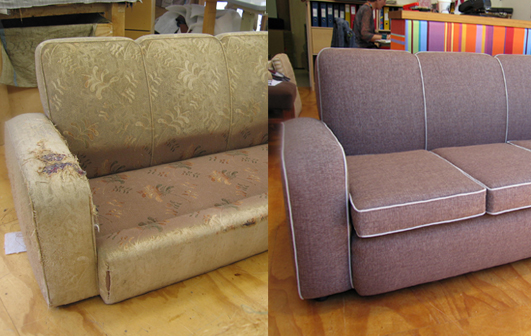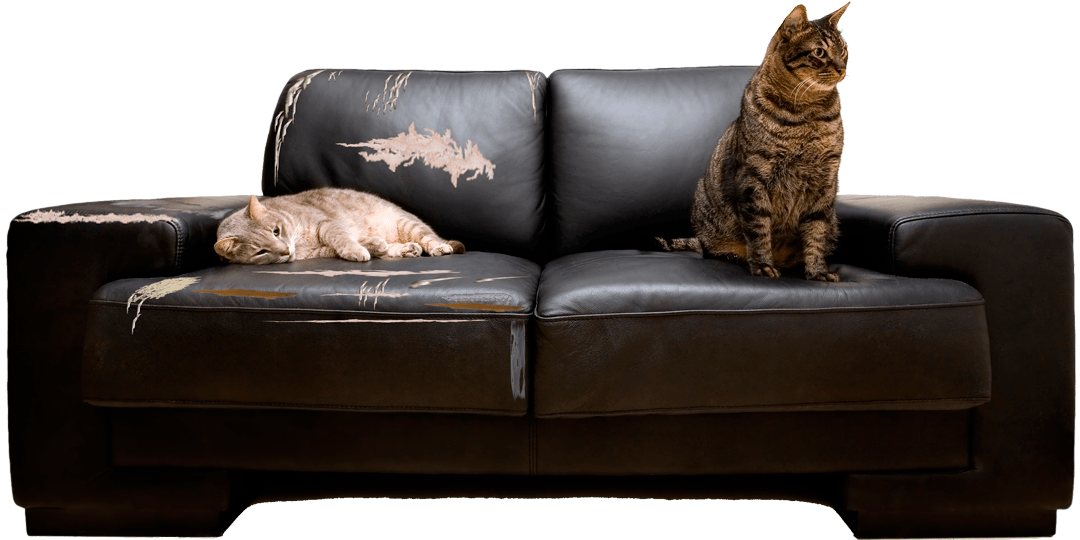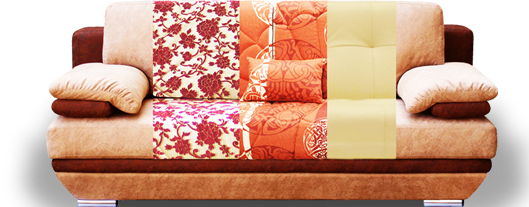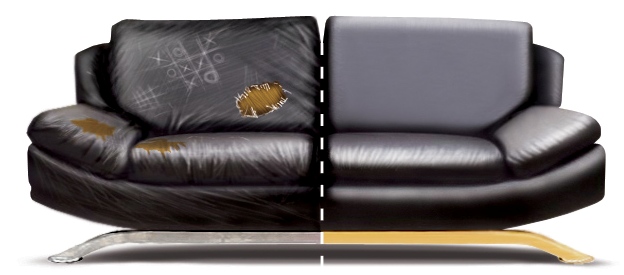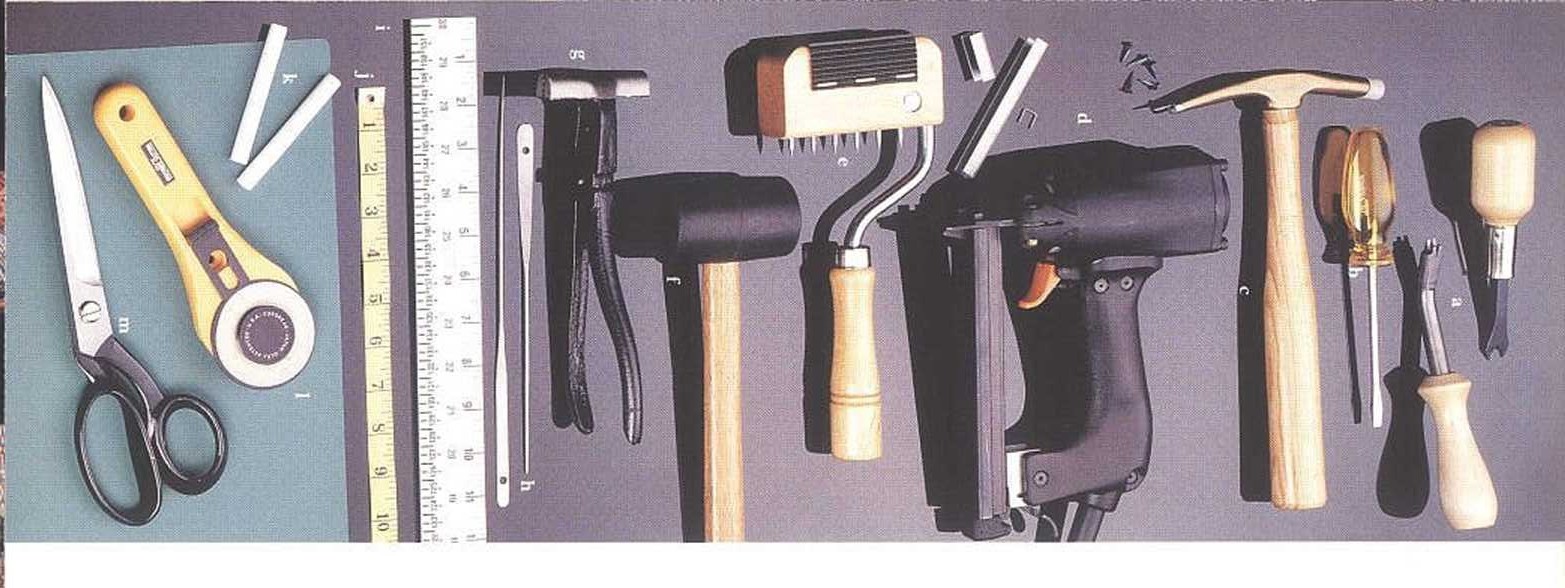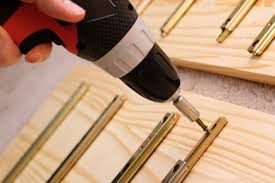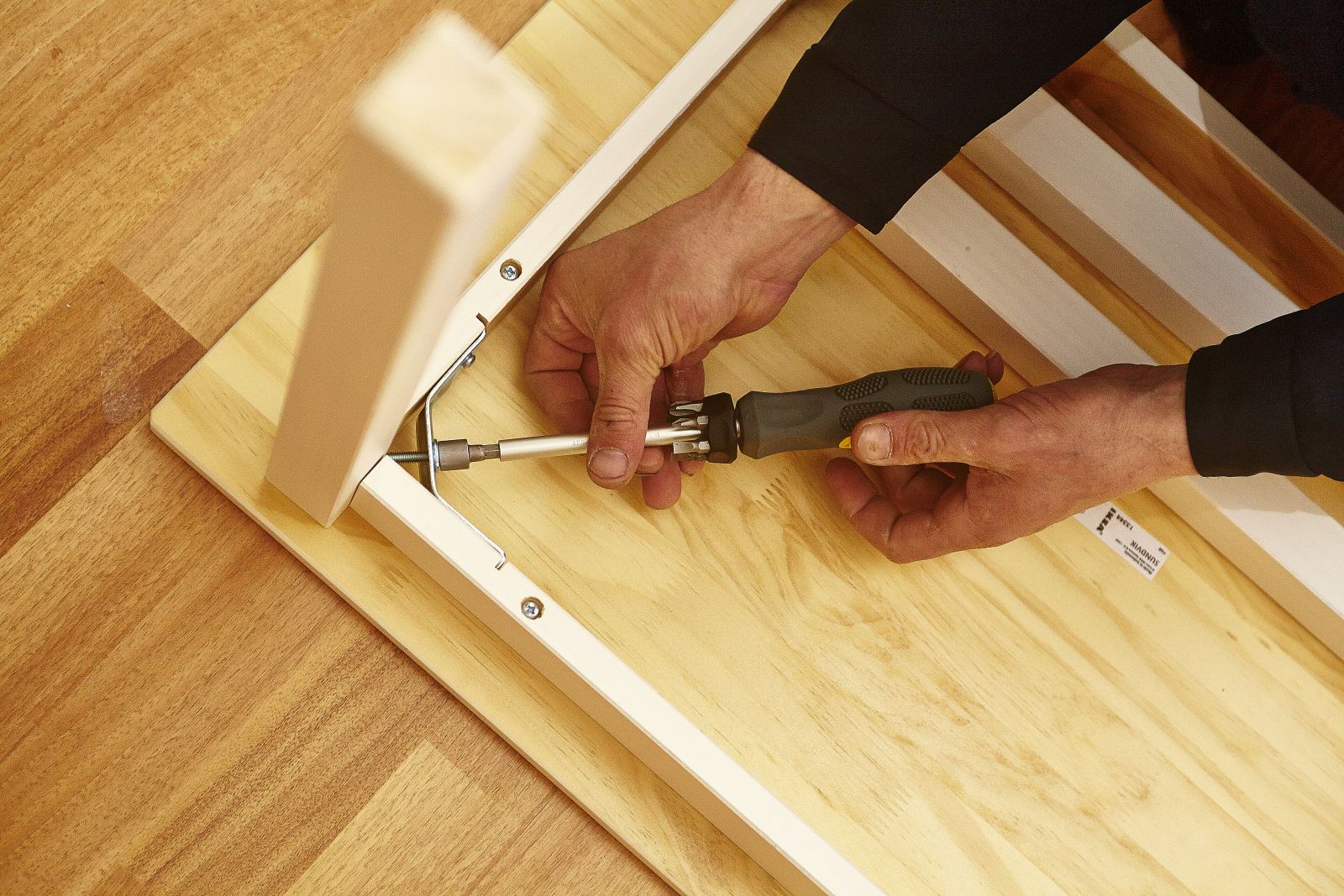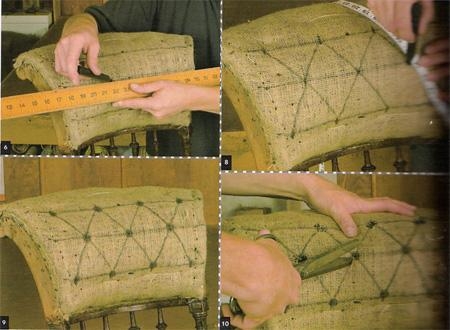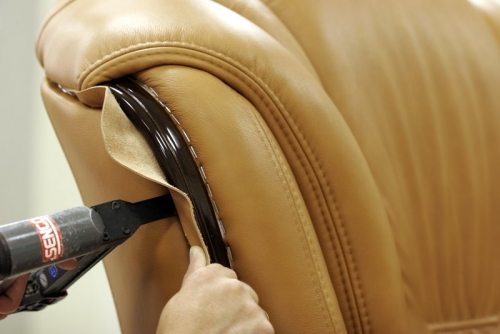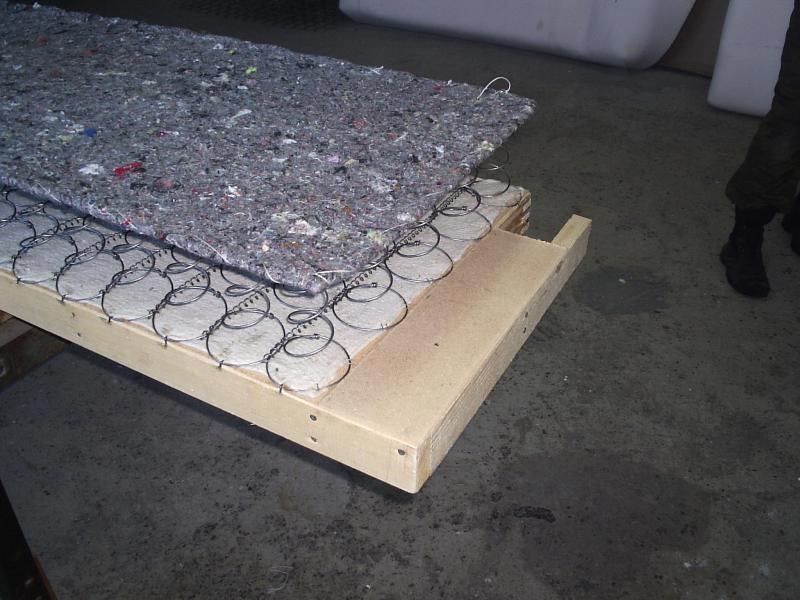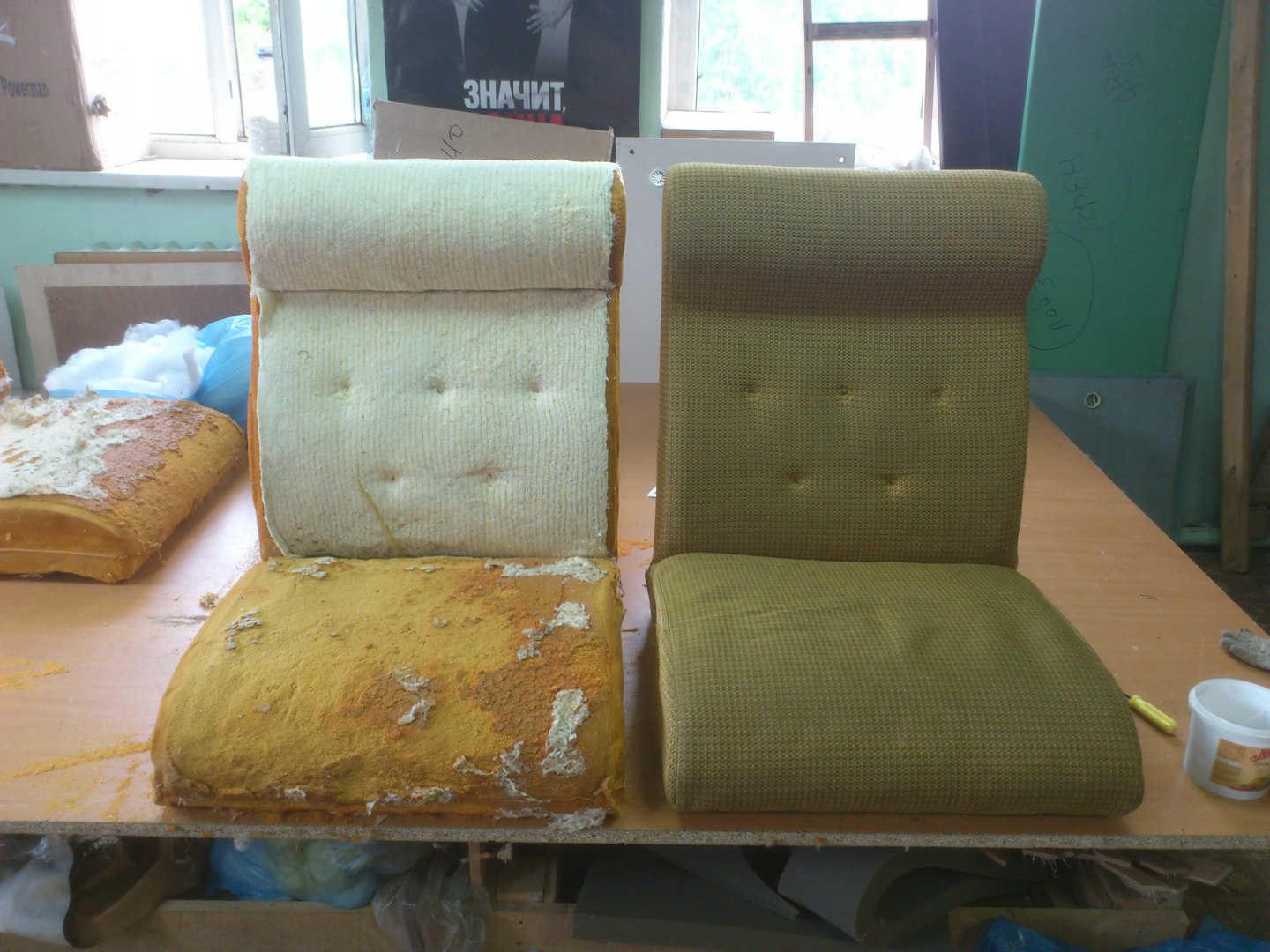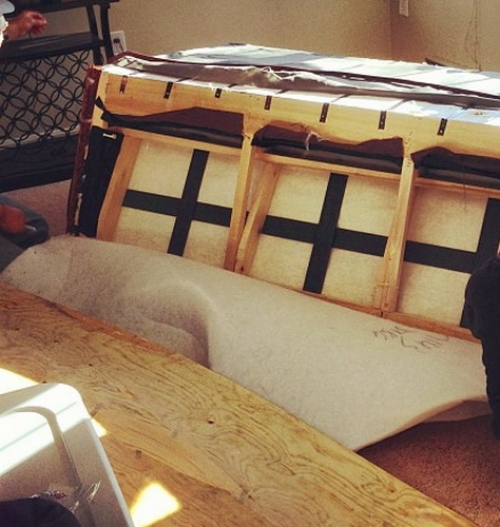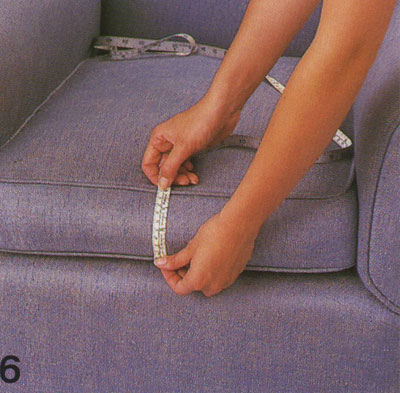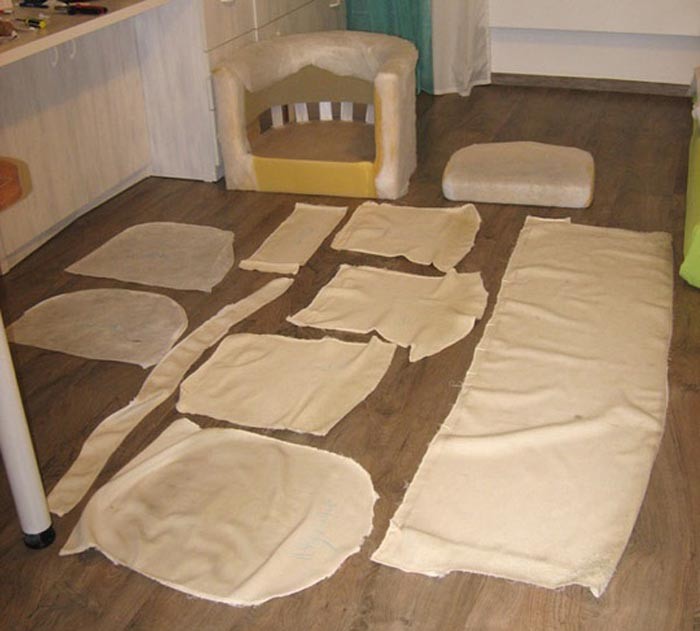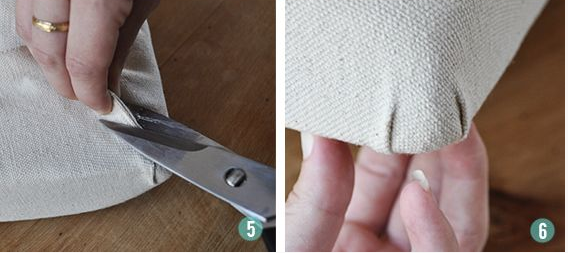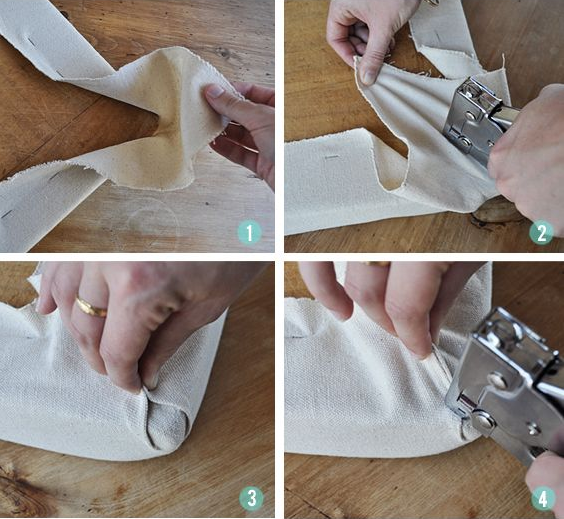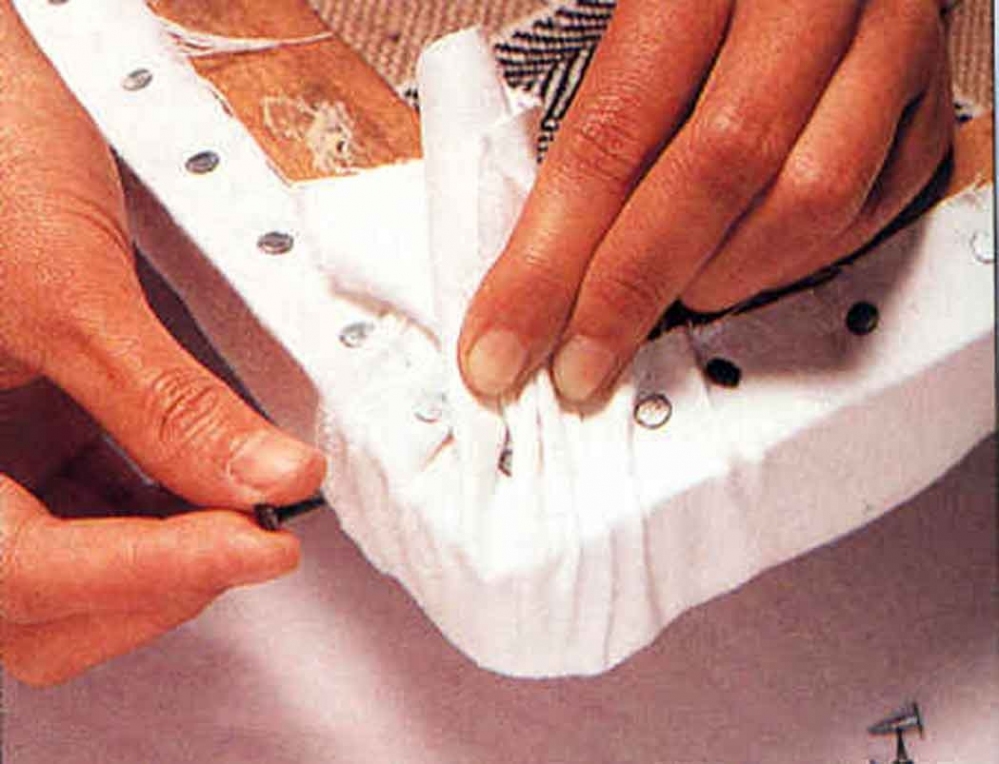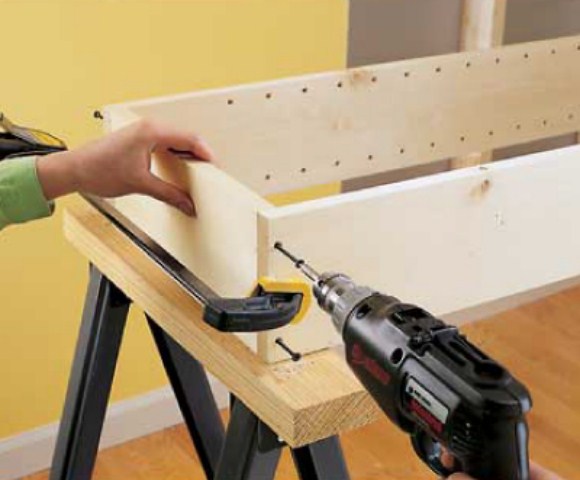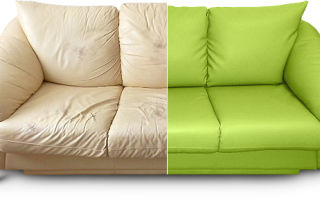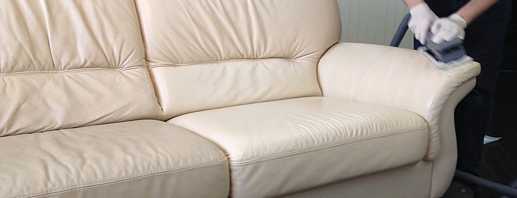Furniture hauling instructions, process description
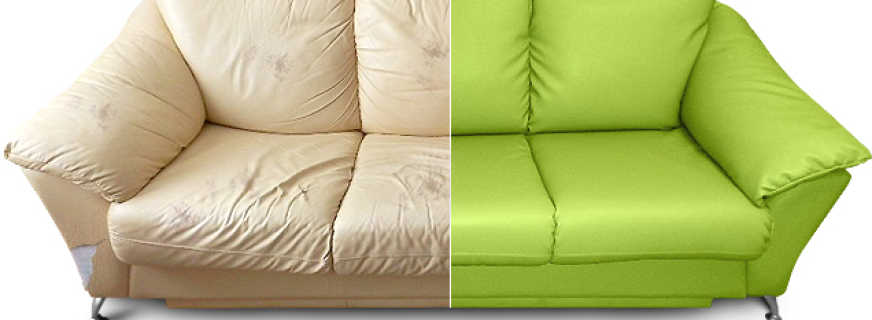
During use, upholstered furniture often becomes unusable, which manifests itself in the form of wiped upholstery and sagging foam rubber. In this case, hauling furniture saves the situation. Replacing the spring blocks and re-upholstering a sofa or chair is not difficult, it is important to have the necessary tools. We offer a more detailed look at the process of updating furniture.
Content
Material selection
To begin the first steps in replacing upholstery and other components, it is important to choose the right materials. These include the selection of fabric, the choice of filler: syntepon and foam rubber, as well as other components. Repair of upholstered furniture is easy to carry out independently, because this will not require special skills.
When proceeding with the selection of upholstery material, be guided by the already existing interior so that the updated furniture is harmoniously written out in style and design into the environment. Pay attention to the recommendations:
- the material for the constriction of furniture should not fade or be too coarse, therefore, in addition to aesthetic options, also consider the practicality of the fabric;
- check that the pile on the fabric is firmly fixed, otherwise these areas will wear out faster during operation;
- the material of increased thickness will help hide some flaws when covering the sofa or chair at home, if this is the first time.
A private country house is usually equipped with expensive furniture with luxury upholstery. A tapestry would be a good option, but it has a high cost and is hardly suitable for a first upholstery experiment. It is better to give preference to companion fabrics, which are represented by two variations: plain material, and fabric with a pattern on the same background.
In order for the restoration of furniture items to be of high quality, it is necessary to choose a good synthetic winterizer. It is put instead of foam rubber or used simultaneously with it. In addition, it is suitable for covering sofa cushions. Below are the criteria that determine the relevance of raw materials in order for the hauling furniture to pass without problems, it is worth taking care of the choice of material:
- the color of the material indicates its quality. It must be white, and if there are impurities of other colors, then it is a recyclable material;
- the synthetic winterizer should be tight and not tear in the hands at the first attempt to stretch it;
- on the canvas should not be tears;
- there is practically no smell of syntepon, but if it exists and has a sharp shade, it is better to abandon the choice of such a material - you only need to pull the furniture with quality fillers.
Another important component is foam rubber.It has many markings and varieties that differ from each other in terms of density, stiffness and elasticity. Do-it-yourself furniture hauling involves the use of that foam rubber suitable for the intended purpose of the objects. For example, for sofas, materials with a thickness of at least 10 cm are used, for chairs it will be appropriate to use a material of 5 cm.
In addition to the specified raw materials, a special felt is required, which is laid between the layers of foam rubber, as well as batting - when hauling old furniture with your own hands, this material helps to soften the structure of foam rubber. Sometimes it is used instead of synthetic winterizer.
Necessary tools for work
To carry out the hauling procedure yourself, you need to have in your arsenal a number of tools that are important to obtain an effective result:
- screwdrivers, a screwdriver, wrenches - all of these devices will be needed in order to dismantle old furniture. Before hauling, all furniture parts must be twisted and disassembled, because each element is updated individually;
- flat-nose pliers or round-nose pliers, as well as a chisel or a special pulling out of furniture staples. Having disassembled the furniture, it is necessary to remove the upholstery, which is fixed with brackets. When pulling them out of a sofa or chair, you need to help yourself with pliers;
- hauling upholstered furniture at home is carried out using a furniture stapler and appropriate staples. When choosing this tool, give preference to the mechanical option, if you plan to fit a small number of products. If large-scale work will be done, it is better to purchase an electric stapler.
In addition to these devices, sharp scissors, a construction knife, a hammer and a tape measure are useful. Immediately after selecting the tools, proceed to repair furniture - hauling one medium-sized product will not take much time.
Work stages
Before you begin the process of constricting furniture, the sequence photos of which are presented in our article, you need to carefully inspect the products for their deterioration. It is important to identify the main problems that occurred during operation. Answer the question: what made the furniture unusable, and which areas should be given the most attention. All stages can be clearly seen in the video tutorial on the implementation of the constriction.
The procedure itself consists of the steps:
- disassembly of furniture items;
- removal of the old upholstery;
- replacement of springs and filler;
- pattern of details from fabric;
- upholstery of parts;
- finish assembly.
Do-it-yourself upholstering of furniture is carried out according to the specified plan, so each of the stages of work must be considered in more detail.
Furniture disassembly
The process of disassembling old furniture depends on its design. If we are talking about a soft sofa, then first the side backs and head restraints are twisted, as well as additional equipment. Further, wherever mechanisms can be unscrewed, they must be removed from the sofa. After that, disconnect the main part of the product from its frame.
In the case of chair seats, it does not take much time. Here you need to remove only those parts that will be pulled. In order not to get confused in the sequence of work, watch the video, which is posted in this article, it will help to fully understand the order of the tasks.
Disassemble carefully and slowly, so as not to accidentally damage the mechanisms and fasteners. If the product has not been disassembled before, it will not be superfluous to mark the mounting seats with a pencil. When finishing the assembly, you don’t have to look for the fastening parts for the longest time.
Removing old upholstery
A good tip for beginners in this case is to carefully remove the upholstery for later use as patterns for new fabric webs.Renovated furniture is also refreshed with dermantine, which has a more affordable price than luxury leather. During the process, you will need to perform the following actions:
- using a screwdriver, thin chisel or file, gently pry off all the brackets;
- pull out the brackets using pliers or pliers.
Make sure that there is not a single fixing element left, because it is easy to injure yourself when repairing furniture with your own hands. In order not to pollute the surface of the floor, it will be appropriate to lay a film or old newspapers. Unsuitable foam rubber begins to pour in from under the upholstery, which is difficult to clean in the future.
Before you pull the furniture, check the quality of the old foam rubber: here you can see which places need to be added reinforcement.
Replacing springs and filler
When performing this range of tasks, it is necessary to comply with the technologies that were laid down in the furniture by the manufacturer. If you use innovations instead, there is a risk of a complete change in the configuration of the product, which in the future may affect its quality.
If the springs are still in good condition, then they are repaired. This is done with the help of improvised tools, by bending the devices in the right direction. When the material is spoiled, it is better to purchase a new spring unit, pleasing all users with its elasticity.
The hauling of old furniture is carried out taking into account the replacement of the filler, which is foam rubber, synthetic winterizer, felt or batting. Foam rubber is used constantly, only its elasticity and thickness vary. For armchairs and sofas, thickened material is used, and for chairs and soft stools - raw materials of lower density.
Structurally, the spring side is laid first, after which they place the foam interlayer with felt for reliability. Before upholstering the product, it is covered with batting or synthetic winterizer, which serves to prevent slipping. In order to clearly understand how to drag upholstered furniture, study a special master class that helps to understand all stages of the procedure.
Pattern of details from fabric
For the pattern, use the old upholstery: it will be easier to get suitable sizes. Do not forget to leave 2-3 cm in allowances, in case the fabric lies unevenly.
Before making an independent pattern, it is necessary to thoroughly measure all the dimensions of the tightened part and carefully develop the drawing. Doing it yourself is difficult and will take a lot of time, so it is recommended that you still use old material templates. Therefore, do not tear and do not cut, and even more so do not throw out the sheets you just removed, but leave them for the next stages of work.
Upholstery
To upholstery furniture with your own hands, you will need a stapler and a new fabric material, cut out according to the patterns. Start the process with upholstery on the simplest parts, such as armrests or square side panels. Pay attention to the recommendations:
- try a stapler with staples on an unnecessary piece of cloth and wood;
- correctly select the depth of the brackets so that the new upholstery is firmly fixed to the frame;
- pull the fabric harder to avoid skewing the pattern;
- if the upholstery is done for the first time, use materials with the usual relief ornaments - it is better to refuse complex patterns requiring joining.
If the sofa is pulled over, after updating the main part, check its legal capacity. Fold and unroll the sofa to watch: whether the upholstery is sliding, and what places need to be corrected.
Finish assembly
It is necessary to assemble the furniture back according to the instructions, which, as a rule, are left when disassembling parts. Place and fasten the structure exactly as it was disassembled. Write down the procedure on a piece of paper or make step-by-step banners of furniture photo.
After assembly, check the actions of all mechanisms, and also examine all corners of the products for lack of marriage and defects after work.
A beautifully made furniture product will bring not only aesthetic pleasure, but also practical. Updated upholstered furniture will sparkle with new colors in the interior and will serve for a long time.
Video



